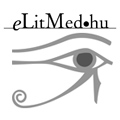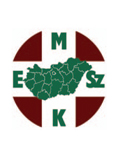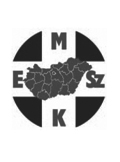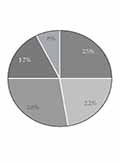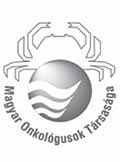The eLitMed.hu medical portal uses computer cookies for convenient operation. Detailed information can be found in the Cookie-policy.
Journal of Nursing Theory and Practice - 2015;28(02)
Content
[The international practice and acceptation concept on Hungary of the Advanced Practice Nurse (APN) training on the MSc level]
[In Hungary it was a niche and a reasonable developement according to the international trends to start the BSc nursing programme in 1989 - then the MSc nursing programme in 2000 -. However the structure of the nursing specialities’ education was not reviewed with the increase of the level of nursing education, so all of the nursing specialities’ education happens under BSc level. Also did not happened the determination of the nursing competencies on each educational level. These causes just contribute to have decreased number of nursing students within the BSc programmes and the numbers of nurses who intent to leave the profession are also increased. Migration of nurses, increased costs of the health care system, aging society, lack of physicians and the special knowledge of nurses to use for diagnostical and therapeutical equipements are challanges too beside these problems regarding the nurses. However, international literature says that with the employment of well-educated BSc, MSc nurses with expanded competencies the the problem of the lack of the physicians, waiting times, costs of the care, patients’ mortality may be decreased, patient’s satisfaction increases and because of the expanded nursing competencies the migration and nurses intent to leave are decreased. That is why it is reasonable to create BSc/MSc nursing specialities and expand nursing competencies in Hungary as well according to the international trends. Authors of this paper draw up a possible recommendation for the Hungarian implementation.]
[The effect of work uncertainty on burnout and health of nurses]
[Aim of the research: To measure how work uncertainty effects on burnout, psychosomatic symptoms and subjective health conditious. Research and sampling methods: In this cross-sectional study the authors have conducted a group of nurses (N=29) at Mátra Health Institute in 2013-2014. The survey was designed by the authors. Results: The burnout becomes higher as the uncertainty at the workplace rises (p=0,038; r=0,387). The degree of the burnout correlates with the subjective negative health status (p<0,001; r=-0,650) and with the appearance of psychosomatic symptoms (p=0,003; r=0,530). The most common psychosomatic symptoms are the backache and dorsal pain, weakness, weariness, headache and sleeping problems. Conclusions: The uncertainty influences only the degree of the burnout, and it had no any effect on other variables) ]
[An in-depth look at chest pain, for ambulance nurses]
[Ambulance nurses often deal with complaints of chest pain, both when working independently and when on call in an emergency ambulance or quick response vehicle. It is essential that they know as much as possible about any life-threatening symptoms, and are as up-to-date with the latest skills when attending patients. This also helps teamwork and efforts to ensure an improvement and the proper treatment of the patient’s condition (in the context of an ambulance nurse’s duties). This all requires a knowledge of differential diagnosis, which gives a broad outline of the diseases that could potentially underlie the chest pains suffered by a patient who calls an ambulance. The more in-depth theoretical knowledge also promotes an understanding of the importance of intervention by ambulance crew/doctors in the case of certain diseases, the importance of the time factor, and the reason for urgency even if the patient’s condition does not appear serious at first glance. In the light of these factors the authors have undertaken to provide readers with new, evidence-based knowledge.]
[The role of self-help groups in the treatment of alcoholism]
[Alcoholism is one of the best-known addictions. The results of both international and national surveys illustrate the health consequences of the excessive consumption of alcoholic beverages, and its link with alcoholic disease and the associated dangers, but we still find a high proportion of people who show unrestrained consumption. Is there a genuine desire to recover, is there motivation, and where should one look for help? Such assistance could take the form of a self-help group, where addicts who want to quit, those in the various stages of recovery, or those who have already recovered, can meet up. The aim is to achieve and maintain abstinence, and prevent a relapse. The author presents the process and benefits of self-help, from the perspective of addiction. Her study proves that the treatment of alcoholism requires a complex approach, and one in which we can ascribe a key role to self-help groups.]
[Intracystic brachytherapy of cystic brain tumors by image fusion method- intracavital beta irradiation of 90-Yttrium solution]
[Aim of the research: The authors aimed to gain acceptance, effectiveness testing and the timetable of the shrinking of the cysts for the treatment procedure of patients with cystic craniopharyngeoma. The procedure utilizes intracavitary beta irradiation by 90Y colloidal solution. Image fusion was used for the first time for the guidance and control of the intra cystic irradiation of brain tumors. The authors also examined the use of the image fusion for brachytherapy of brain tumors before, during, and months or even years after surgery and to patient follow up. Research and sampling methods: 130 craniopharyngeoma cyst was irradiated with the Yttrium-90 colloidal solution in 84 patients. The internal wall of the cyst were getting a load of 180-300 Gy. The volumes of the cysts were followed almost over 30 years by the control of CT-MRI image fusion. For the planning of the irradiation the authors developed their own software and BrainLab was used for the CT-MRI-PET image fusion. For the mathematical and statistical calculation Matlab and MedCalc soft wares were utilized. Results: The results were from 130, 90Y β stereotactic intracavitary irradiation of cystic craniopharyngiomas. As per cystic CRF volume the volume reduction exceeded 80 %. The mean survival rate following 90-Y irradiation was 7.5 years. Large-scale shrinkage of craniopharyngioma cysts were observed significantly, following 6 months. Conclusions: According to long term clinical experience the intracavitary 90 Yttrium brachytherapy is a relatively non-invasive and effective mode for the recurrent cystic craniopharyngeoma therapy. Procedures where isotope get implanted, qualify in all aspects of a minimally invasive therapy.]
1.
Clinical Neuroscience
[Headache registry in Szeged: Experiences regarding to migraine patients]2.
Clinical Neuroscience
[The new target population of stroke awareness campaign: Kindergarten students ]3.
Clinical Neuroscience
Is there any difference in mortality rates of atrial fibrillation detected before or after ischemic stroke?4.
Clinical Neuroscience
Factors influencing the level of stigma in Parkinson’s disease in western Turkey5.
Clinical Neuroscience
[The effects of demographic and clinical factors on the severity of poststroke aphasia]1.
2.
3.
4.
5.
